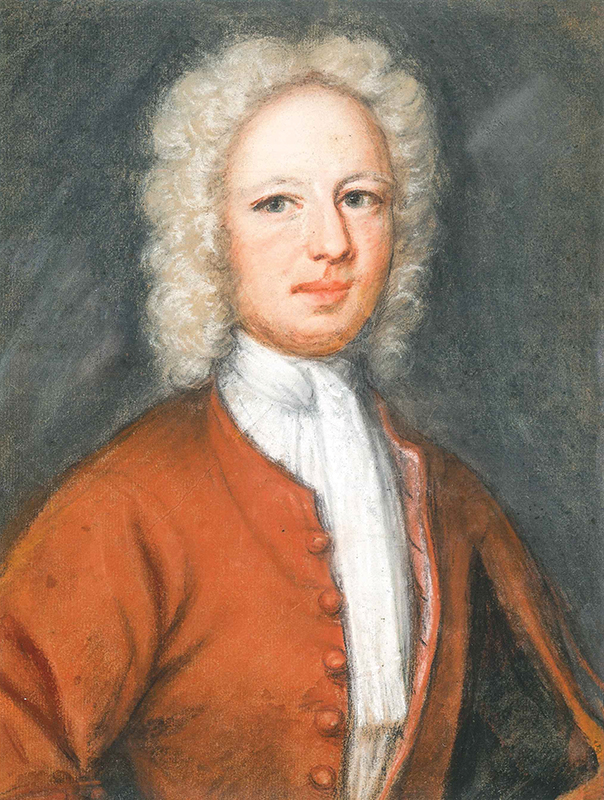
Fig. 1. Portrait of Colonel John Moore [1686–1749] by Henrietta Johnston (c. 1674– 1729), 1725. Pastel on laid paper, 11 5⁄8 by 8 7⁄8 inches. Private collection.
In the world of old master paintings and drawings, there is probably nothing more daunting than challenging the primacy of a work that has been chronicled in the leading scholarly literature on the artist for close to a hundred years. Although Henrietta de Beaulieu Dering Johnston, who has earned the distinction of being both the first professional woman artist and the first professional pastelist in America, does not exactly fit the classic description of an old master, it is nevertheless difficult to cast aspersions on the authenticity of pastels that are among the most frequently published and most revered of all her works.
But that is exactly what must be done with respect to the much-published and illustrated portraits of Colonel John Moore1 (Fig. 5) and his wife, Frances Lambert Moore (Fig. 6), in light of the appearance a decade ago of Johnston’s original portraits of these subjects and their accompanying documentation, which reveals both that they are the originals and that the portraits of the same subjects firmly ensconced in the Johnston literature are well-documented copies made in the first half of the nineteenth century.
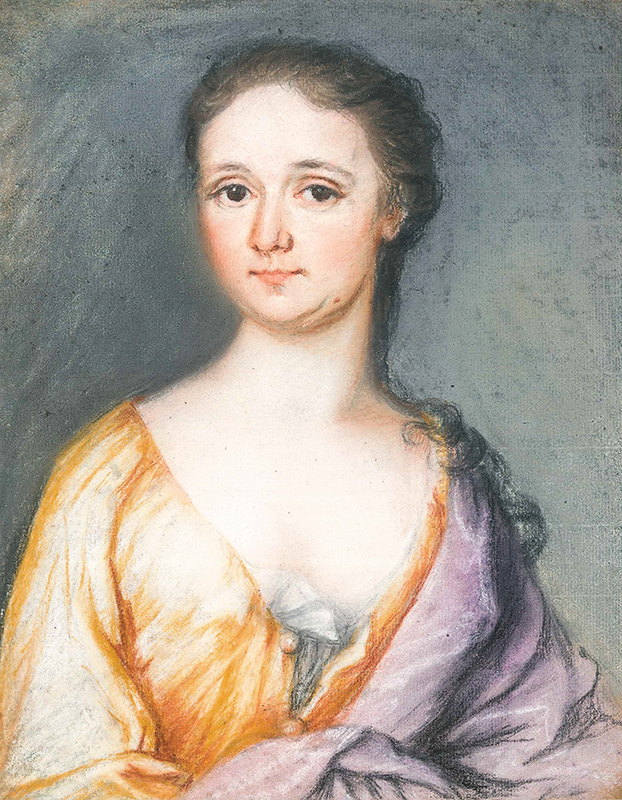
Fig. 2. Portrait of Frances Lambert (Mrs. John) Moore [1692–1782] by Johnston, 1725. Pastel on laid paper, 11 ½ by 8 7⁄8 inches. Private collection.
The facts of Henrietta Johnston’s life were gradually disclosed in a series of articles starting with one titled “Art and Artists in Provincial South Carolina,” by the Reverend Robert Wilson, which appeared in the Year Book: City of Charleston, S. C. for 1899. 2 An article by early historian of American art Frederic Fairchild Sherman in the Literary Digest for July 30, 1927, had little information about the artist but spoke at length about some of her subjects. Articles by Eola Willis in International Studio, also in July 1927, and in the Antiquarian for September 1928, and others by The Magazine ANTIQUES editor Homer Eaton Keyes in May 1928 and December 1929,3 breathlessly reported new details of Johnston’s life and additions to her body of work— originals as well as documents implying the existence of still other portraits that had not yet been located.
The first person to effectively sort out fact from fiction was the art historian Anna Wells Rutledge whose article, “Who Was Henrietta Johnston?,” was published in the March 1947 issue of ANTIQUES. She reported that Johnston had lived in Ireland for many years before her arrival in Charleston with her financially strapped husband, the Reverend Gideon Johnston, who was to serve as rector of St. Philip’s Church, Charleston, and Commissary in South Carolina of the Bishop of London. The Johnstons’ troubled financial situation was to continue in the New World—Gideon, longing to move on, wrote that he was “under a fated necessity of continuing here until I am able to pay my debts”4—though their circumstances were substantially aided by his wife’s production of small pastel portraits. Indeed, within only about eighteen months of their arrival, Gideon Johnston wrote that “were it not for the Assistance my wife gives me by drawing Pictures,” they could not survive, a situation not helped by the fact that his wife had “long ago made an end to her materials,”5 which had likely been brought with her from abroad.
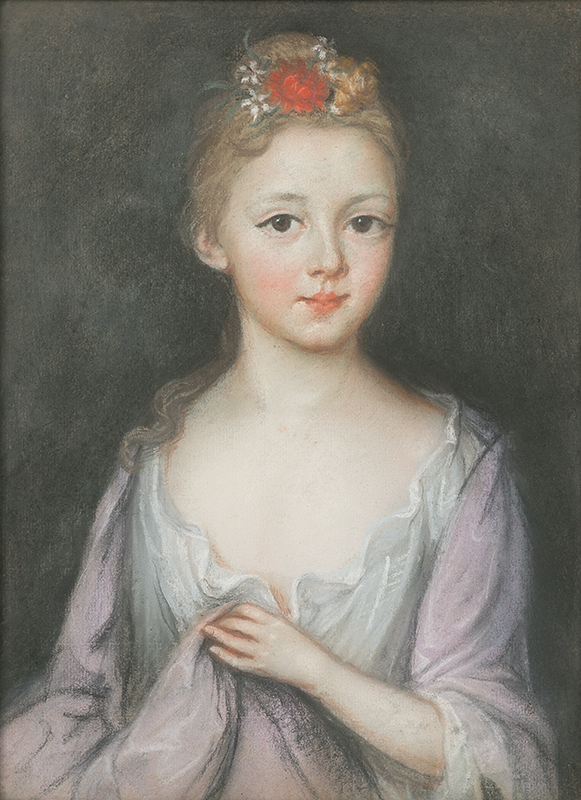
Fig. 3. Portrait of Frances Lambert Moore [1715–1805; later Mrs. Samuel Bayard] by Johnston, 1725. Pastel on laid paper, 11 1/2 by 9 inches. Private collection; photograph by David Coulter.
In 1966 the University of South Carolina Press at Columbia published Margaret Simons Middleton’s monograph on Henrietta Johnston, which included an updated biography of the artist, an annotated checklist of her forty-eight known and documented pastels, and thirty-four illustrations of her work. And in 1991 the Museum of Early Southern Decorative Arts, in Winston- Salem, North Carolina, and the Gibbes Museum of Art in Charleston collaborated on a monographic exhibition of Johnston’s work, listing in the accompanying catalogue, fifty-six pastels, including fourteen “lost” works, and illustrating forty examples, among them nine works from her pre-American Irish period.6
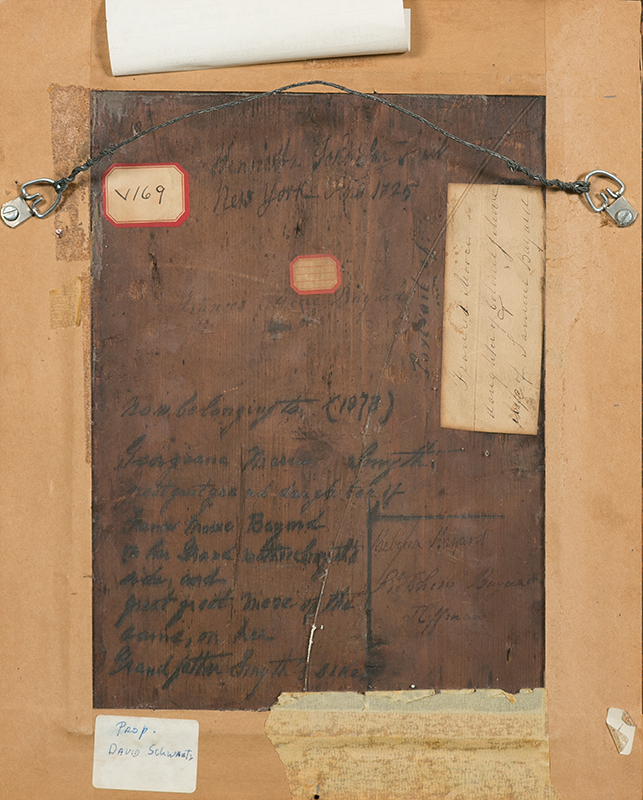
Fig. 4. Reverse of Fig. 3. Inscribed “Henrietta Johnston Fecit/ New York Ano 1725” at top center, with later inscriptions below. Coulter photograph.
In her July 1927 article on Johnston, Eola Willis illustrated a portrait of Colonel John Moore (Fig. 5), which she dated to 1725 and which she described as “one of the few pastels . . . which is owned in the North.”7 She also illustrated a portrait of the colonel’s daughter, Frances Lambert Moore, later Mrs. Samuel Bayard (Fig. 3), and mentioned a third portrait, that of the colonel’s wife, also Frances Lambert Moore (Fig. 6). All were credited to Ehrich Galleries in New York, which dealt extensively in portraits by, and oftentimes erroneously attributed to, American artists of the eighteenth and early nineteenth centuries, even though by 1926, when the Frick Art Reference Library had photographed them in its concerted effort to catalogue large numbers of eighteenth-century American portraits, they were already in the collection of legendary Americana collectors Mr. and Mrs. Luke Vincent Lockwood of Greenwich, Connecticut. (Also illustrated were the wooden panels on the backs of the portrait of Colonel Moore and daughter Frances, showing the artist’s signatures, dates, and inscriptions, as well as histories of ownership added in 1878.) Thus began the publication of the Moore portraits, which are mentioned in Willis’s Antiquarian article the next year, with the portrait of Mrs. Moore illustrated on a page following the article.8 The portraits next made a public appearance in the estate sale of the Lockwood collection at Parke-Bernet Galleries, New York, on May 15, 1954, as lots 443 (Colonel Moore), 444 (Mrs. Frances Lambert Moore), and 445 (daughter Frances Lambert Moore). At that sale, the portrait of Colonel Moore was acquired by Colonel Edgar William and Bernice Chrysler Garbisch, either with the supposition that despite its academic pretentions the portrait of Colonel Moore would make a suitable addition to their collection of American folk art, or perhaps simply as an accompaniment to their collection of eighteenth-century American furniture. That portrait remained with the Garbisches until their deaths, after which it was sold at Sotheby Parke Bernet, New York, on April 27, 1978, lot 494, to a descendant of the subject. The companion portraits of Colonel Moore’s wife and daughter were acquired by collectors Esther and Samuel Schwartz of Paterson, New Jersey, and have since descended separately to two of their grandchildren.
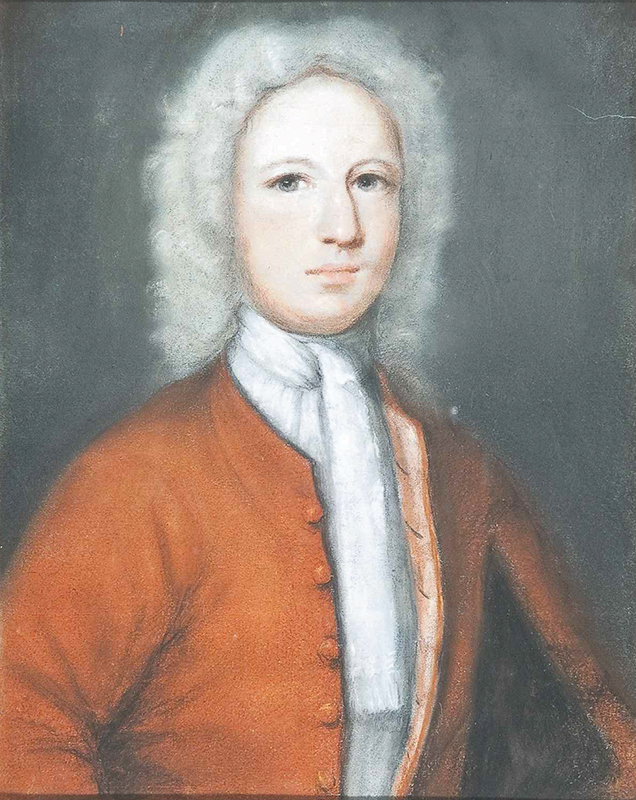
Fig. 5. Portrait of Colonel John Moore by T. H. Smith, after Henrietta Johnston, c. 1830–1850. Pastel on wove paper, 11 1/4 by 8 3/4 inches. Private collection.
In 1966 the three Moore portraits were recorded and illustrated by Middleton, who added a portrait of Thomas Moore, the seventh child of Colonel and Mrs. Moore, in the guise of a cupid (Fig. 9). The group was assigned to New York in 1725 on the basis of signatures, dates, and inscriptions on the wooden backing (see Fig. 4) of each of the portraits. All four likenesses were listed in the catalogue of the 1991–1992 MESDA-Gibbes exhibition, which recorded that all but the portrait of Thomas were signed, dated, and inscribed on their backboards, although the portrait of Thomas is actually identically signed, dated, and inscribed.9
The portraits of Colonel and Mrs. Moore and of their ten-year- old daughter thus became comfortably ensconced in the Henrietta Johnston bibliography. But the appearance of a second pair of portraits of Colonel Moore (Fig. 1) and his wife (Fig. 2) in an Americana sale at Sotheby’s, New York, on January 21, 2006, lot 324, suggested that two of the three Ehrich/Lockwood Moore portraits are not actually by Henrietta Johnston. Although no meaningful history of the Sotheby’s portraits was given at the time, the portrait of Colonel Moore was backed by two manuscript documents, variously dated May 1, 1852, and January 16, 1859 (Fig. 8), and that of Mrs. Moore was accompanied by a document dated May 1, 1852 (Fig. 7). The earlier manuscript attached to Colonel Moore’s portrait is the most revealing: “This is the original Portrait of Col. John Moore, taken from life by Henrietta Johnson [sic], in 1725. Born in Carolina 11 Augt. 1686 Died. . . . New York 29 Octob. 1749. . . . It belonged to his youngest Daughter, Ann Moore, born Jany 16. 1738 Died at Step. B. Hoffman’s Madison Co. NYork 1830–after the latters death (27 July 1850) it was give[n] to me by his Daughters Margaret & An[n], in exchange for the Copy of the same that was taken for me many years ago by TH Smith.” The inscription penned in 1859 adds little information.
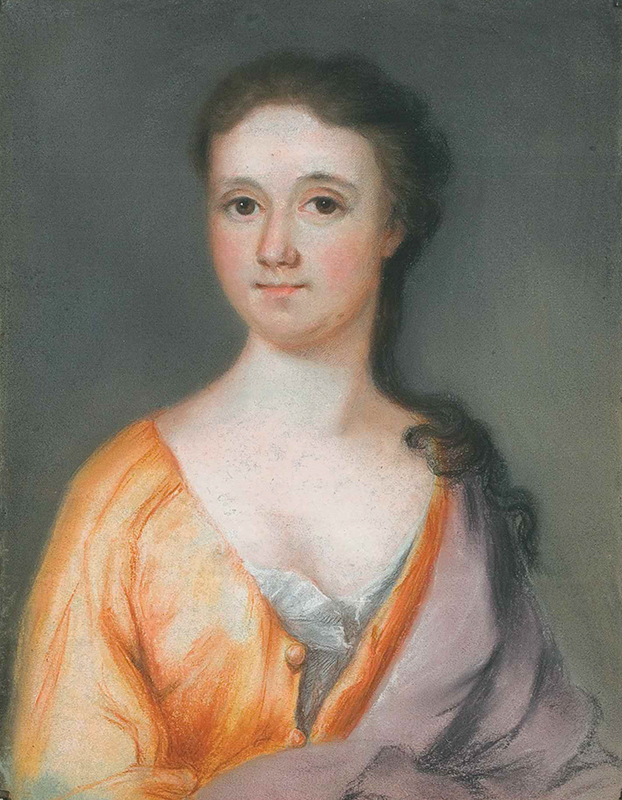
Fig. 6. Portrait of Frances Lambert (Mrs. John) Moore [1692–1782] by Smith, after Johnston, c. 1830–1850. Pastel on wove paper, 11 1/2 by 9 inches. Private collection.
From the document on the back of Mrs. Moore’s portrait (Fig. 7) we learn that it, too, was exchanged for Smith’s copy, but that Margaret and Ann “still have the original portrait of Frances Moore Eldest daughter of Col. Jno Moore.” The document also identifies Smith as a “pupil of Dan.l Huntington,” who was a prolific mid-to-late nineteenth-century portrait painter in New York. Smith may have been the portrait, figure, history, and flower painter Thomas H. Smith who exhibited at the American Art-Union in New York from 1845 to 1849, and at the National Academy of Design, also in New York, from 1843 to 1847.
All three manuscripts are signed “T. W. C. Moore,” whom Moore family descendant and genealogist Terri Bradshaw O’Neill of Colleyville, Texas, has identified as Thomas William Channing Moore (1794–1872), a great-grandson of Colonel Moore through his son Thomas (1722–1784).10
From the testimony contained in these manuscripts, it is thus not a coincidence that the pair of Smith copies of Johnston’s originals of Colonel and Mrs. Moore descended with the original portrait of their daughter Frances as they were offered by Ehrich Galleries and sold to the Lockwoods and onward.
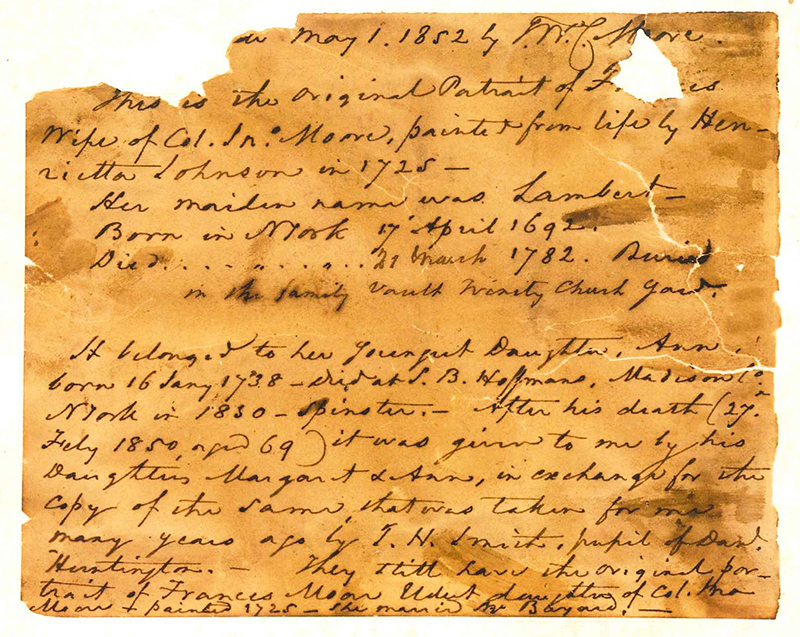
Fig. 7. Inscription by Thomas William Channing Moore (1794–1872), dated “May 1, 1852,” on paper attached to the back of Fig. 2.
The Moore portraits sold in 2006 are executed on laid paper and are unmistakably works dating from the eighteenth century. Examination of the portrait of daughter Frances has revealed that it is on the same paper as that used for those portraits of her parents. On the other hand, study of the former Lockwood portrait of Mrs. Moore revealed that it is on a different paper, a smooth wove paper showing none of the texture of laid paper. Its companion portrait of Colonel Moore, together with the portrait of Moore sold in 2006, were subsequently exam examined by Marjorie Shelley, Sherman Fairchild Conservator in Charge of Paper Conservation at the Metropolitan Museum of Art, on March 3, 2010. She determined that the Lockwood portrait of Colonel Moore, like the Lockwood portrait of Mrs. Moore, is on wove paper. This thus confirms Thomas William Channing Moore’s May 1, 1852, manuscripts attached to the backs of the portraits sold in 2006 that “the original portrait of Frances Moore, Eldest daughter of Col. Jno Moore” was owned by the same people who owned the copy portraits of her parents. It is thus not surprising that these portraits made their initial public appearance as a trio in the early twentieth century at Ehrich Galleries.
In his 1852 statements Moore asserted that the copies were made for him “many years ago.” “Many years” before 1852 would likely not have been after the 1830s, and possibly earlier, when the copies were made on wove paper, which came into widespread use only in the later eighteenth century, long after Henrietta Johnson’s death in 1729.
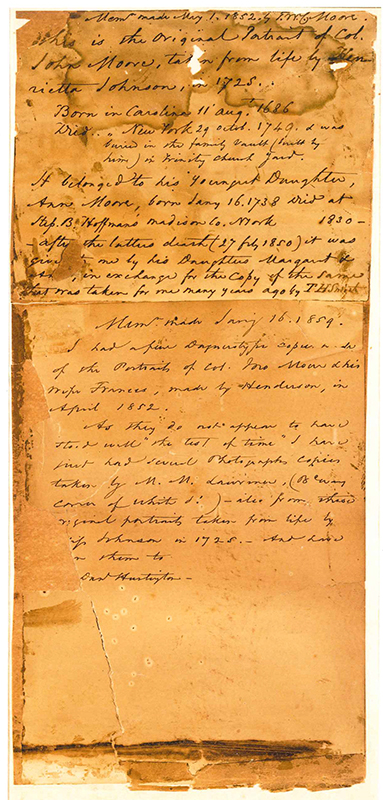
Fig. 8. Two inscriptions by Thomas William Channing Moore, dated “May 1, 1852,” and January 16, 1859, on paper attached to the back of Fig. 1.
In examining the portrait of Colonel Moore sold in 2006, Shelley observed various techniques also seen in other autograph works by Johnston, including the use of graphite, the use of the blue paper as a coloristic element, the use of crosshatching, and a more sophisticated technique of shading. Further, in its companion portrait of Mrs. Moore the shawl that covers her proper left shoulder is executed in a mauve pastel. The color of daughter Frances’s coat is exactly the same mauve pastel. (In the Lockwood portrait of Mrs. Moore, the shawl is a dull gray.) When the Moore portraits sold in 2006 and that of their daughter were examined together in September 2009 for the first time in nearly 160 years, they read perfectly as a unified suite of portraits, with respect to the type of paper, palette, and technique.
Thomas William Channing Moore, author of the inscriptions attached to the backs of the portraits in Figures 1 and 2, died without issue in 1872. In his Last Will and Testament, dated August 20, 1858, he left to his brother Francis Childs Moore of Quincy, Illinois, many family heirlooms, the first of which was “the original [my emphasis] portraits of my great grandparents, Col. John Moore & wife (No. 35 & 36 in Catalogue),” thus distinguishing them from the copies he had once owned. (The numbers likely referred to a catalogue Moore had prepared of his ancestral holdings).11
From Francis Moore the portraits likely descended to his daughter, Susan Matilda Moore (Mrs. Jacob Hollowbush, later Mrs. Platt; c. 1828–1906) of Oakland, California, and then to her daughter, Kate W. Hollowbush (Mrs. Charles E. Allen; 1846–between 1910 and 1920), also of Oakland. They then passed to her daughter, Maud Rex Allen (Mrs. Louis Allen; 1875–1966 or 1967), of San Francisco, and, finally, to her son, Rex Whitaker Allen (1914–2008), of Portland, Oregon, before leaving the family in 2006.
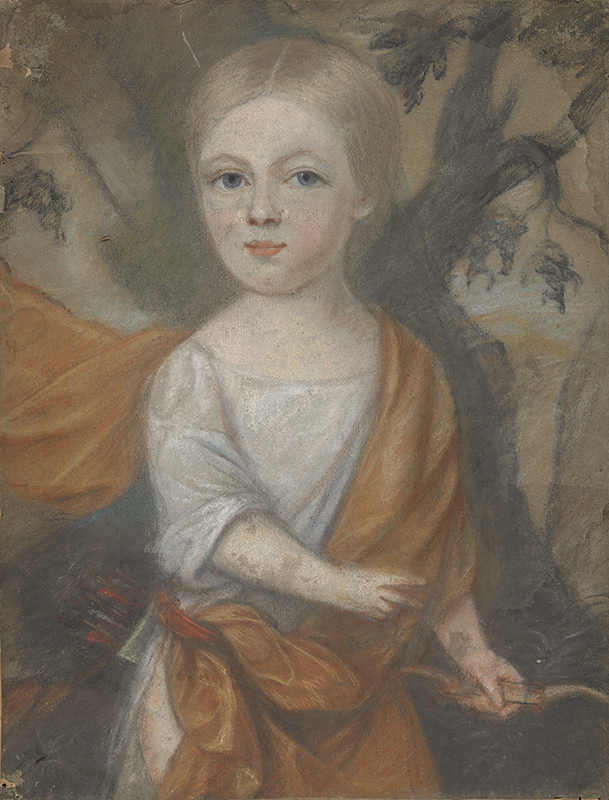
Fig. 9. Thomas Moore [1722–1784] as a Child by Johnston, 1725. Inscribed “No 21/ Henriette Johnston Fecit/ New York, ano/1725” on original wood backing panel. Pastel on paper, 11 1/4 by 8 5⁄8 inches. Virginia Museum of Fine Arts, Richmond, gift of the Honorable and Mrs. Alexander W. Weddell; photograph by David Stover, © Virginia Museum of Fine Arts.
Henrietta Johnston typically backed her pastel portrait drawings with wooden panels that she inscribed with her name, date, and location. The portrait of daughter Frances retains its original wood panel backing (Fig. 4), which is so inscribed, but the original panels and the original frames from the portraits sold in 2006 were transferred to the copies—presumably at the time the copies were made, so that they and the portrait of young Frances would all match. Like that of the portrait of young Frances, the backboards originally attached to the portraits sold in 2006 are identically signed, inscribed, and dated 1725. All three also bear long inscriptions written by Georgiana Maria Smyth in 1878, who described herself as “great great grand daughter of Frances Moore Bayard on her Grandmother Smyth’s side and great great Niece of the same, on her Grandfather Smyth’s side.” Although long separated from the three Lockwood portraits, the likeness of Thomas in the guise of a cupid also bears an identical inscription on the back panel.
But for the fact that the original backings of the three Moore portraits established that they were executed in New York in 1725, it might have been assumed that they were executed in Charleston at a time when the Moores may have made a return visit to South Carolina. But, on the one hand, Moore family genealogist Terri O’Neill is certain that the Moores never returned to Charleston,12 and, on the other, Henrietta Johnston’s trip to New York in 1725 likely also produced at least the portrait of the young Elizabeth Colden (1719/20–1784),13 daughter of Cadwallader Colden, lieutenant governor of New York; it bears a nearly identical inscription on the back, “Henrietta Johnson, pinxit/ New York A. D. 1725,” and is stylistically and compositionally similar to the likeness of Thomas Moore. Middleton has suggested that the portrait of New Yorker Mrs. Anthony Van Schaick might also date from the artist’s sojourn in New York.14
The purpose of Johnston’s trip to New York has not been established, but it was not uncommon for artists in the eighteenth century and well into the nineteenth to travel in search of commissions. And this may indeed have been inspired by Gideon Johnston’s lament, only eighteen months after they had arrived in Charleston, that patronage “can last but a little time in a place so ill peopled.”15
How long Henrietta Johnston remained in New York is also uncertain, but it is known that by 1726 she was back in Charleston. She died there in 1729.
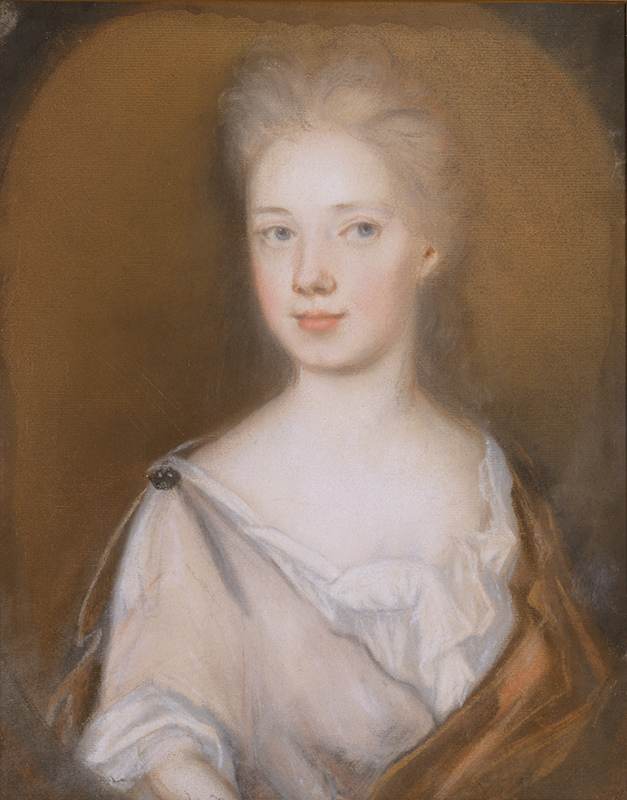
Fig. 10. Mrs. Pierre Bacot (Marianne Fleur Du Gue) by Johnston, c. 1708–1710. Metropolitan Museum of Art, New York, gift of Mrs. J. Insley Blair.
The discovery of two of the original portraits from among the few that document Henrietta Johnston’s sojourn in New York provides an opportunity to reevaluate the work she left behind. Without question, the vast majority of her sitters lived in Charleston or were a part of the local plantation society, and much of her work has remained in the hands of descendants of the subjects, or has immigrated to a few southern museums, especially the Gibbes Museum of Art, which has ten works, and the Museum of Early Southern Decorative Arts, which includes three. As early as 1927 Eola Willis observed that whereas most of Johnston’s pastels “were at one time in Charleston, through the vicissitudes of over two hundred years, death and bequests, they have been scattered throughout the state, and some, it is understood, have been sold to northern collectors.”16 Indeed, the portraits of the Pierre Bacots in the American Wing at the Metropolitan Museum of Art (see Fig. 10) came as a benefaction from the collection of noted Americana collector Mrs. J. Insley Blair of Tuxedo Park, New York, in 1947.
A review of all the illustrations of Johnston’s pastels in the 1966 Middleton monograph and the 1991 exhibition catalogue, and the extensive Johnston photograph archive at the Frick Art Reference Library reveals a remarkable inconsistency of style, which in any other artist would immediately have triggered a number of questions about attribution. But instead of suggesting problems of authorship, the diversity of style can rather be seen largely as a function of the fact that the majority of these portraits had spent most of their time in the hot and humid climate of the Carolina Low Country, where they had been riddled with holes from hungry worms and insects, and suffered, too, from the excessively damp climate. Indeed, in three portraits illustrated in the 1991 catalogue the paper was in such bad condition that the figural elements had been cut out of the original sheets and backed onto new pieces of paper, and then restored.17 Thus, not surprisingly, a review of the illustrations of about fifty different portraits variously in the 1966 and 1991 publications suggests not a unified body of material, but rather a medley of styles that is certainly a function of the hands of the many restorers who worked on them over the years to put them into respectable and exhibitable condition. In this context, the Lockwood portraits of Colonel and Mrs. Moore were perfectly at home, and any concerns that might have arisen about their “style” would have been allayed by the obvious diversity of Johnston’s style. Indeed, the authors of the 1991 exhibition catalogue acknowledged that “the style [of Col. Moore’s portrait] is slightly different from her earlier portraits,” mistakenly implying a difference based on period rather than authorship.18 By contrast, because the Moore family portraits were done in New York and spent their lives in New York, in the Midwest, and then on the West Coast, all away from the hot and humid climate of the Carolinas, and remained in the care of one family for 281 years, they have survived in perfect condition, and thus provide an excellent bellwether of Johnston’s style before the intervention of damage and restoration.
1 John Moore was born in Berkeley County, South Carolina, and moved with his family to Philadelphia at about age seven. He eventually settled in New York City, where he established a prosperous importing business, and served as an alderman and as a colonel in the city’s regiment of foot. On December 19, 1713, Moore married Frances Lambert, daughter of Huguenot émigrés. They would have eighteen children, twelve surviving infancy. 2 As reprinted in Robert Wilson, Half Forgotten By-Ways of the Old South (Columbia, SC: State Company, 1928), pp. 208–209. 3 Homer Eaton Keyes, “The Editor’s Attic: Two Early Pastels,” The Magazine ANTIQUES, May 1928, p. 383; and “Coincidence and Henrietta Johnston,” December 1929, pp. 490–494. 4 Quoted in Anna Wells Rutledge, “Who Was Henrietta Johnston?,” ibid., March 1947, p. 184. This article also provides information about other early publications on the artist. 5 Ibid., p. 185. 6 For more on Johnston’s life and work in Ireland, see Martha R. Severens, “Who was Henrietta Johnston?,” ibid., November 1995, pp. 704–709. 7 Eola Willis, “The First Woman Painter in America,” International Studio, vol. 87 (July 1927), p. 16. 8 Eola Willis, “Henrietta Johnston, South Carolina Pastellist,” The Antiquarian, vol. 11 no. 2 (September 1928), pp. 46ff.; the portrait of Mrs. Moore appears in “The Antiquarian’s Picture Gallery: Examples of Three Antique Arts,” ibid., vol. 11 no. 2 (September 1928), p. [48]. 9 Christopher Oliver to Sylvia Yount, Virginia Museum, email, August 26, 2013, forwarded to S. P. Feld, August 26, 2013. 10 Terri Bradshaw O’Neill to S. P. Feld, email, October 20, 2009. 11 Last Will and Testament of Thomas William Channing Moore, Department of Records and Information Service, New York City Surrogates Court (copy supplied by Terri Bradshaw O’Neill). 12 O’Neil to S.P. Feld, email, November 6, 2009. 13 Henrietta Johnston: who greatly helped … by drawing pictures (Winston-Salem, NC: Museum of Early Southern Decorative Arts, 1991), p. 67, no. 40. 14 Margaret Simons Middleton, Henrietta Johnston of Charles Town, South Carolina: America’s First Pastellist (Columbia, SC: University of South Carolina Press,1966), pp. 67–68, illus. np 15 Quoted in Rutledge, “Who Was Henrietta Johnston?,” p. 185. 16 Willis, “The First Woman Painter in America,” p. 14. 17 Henrietta Johnston: who greatly helped, pp. 45, 47, 49, nos. 16, 18, 20. 18 Ibid, p. 65.
